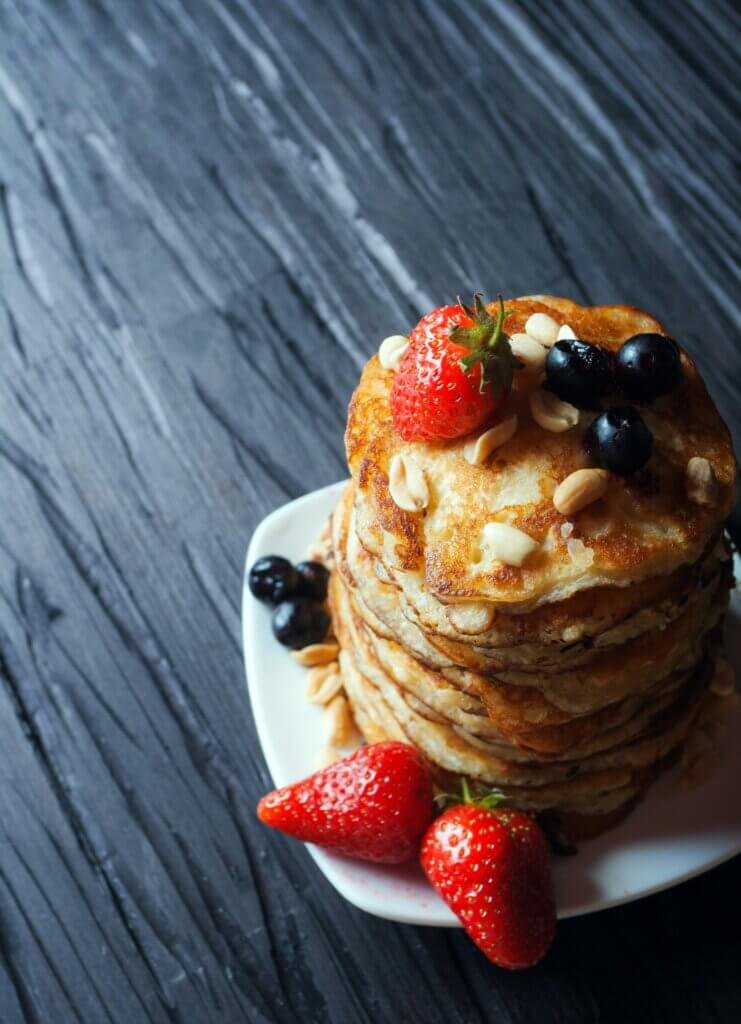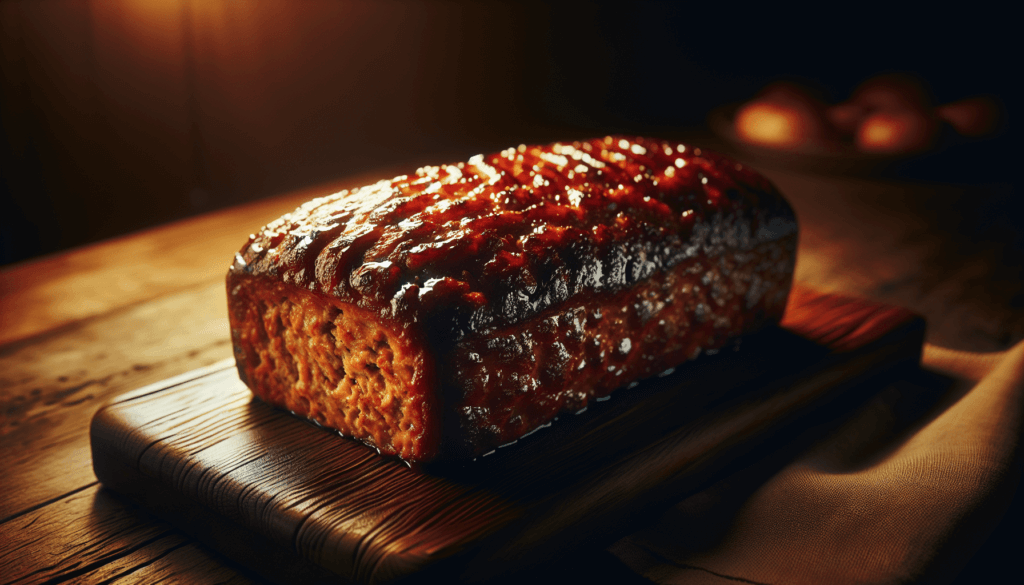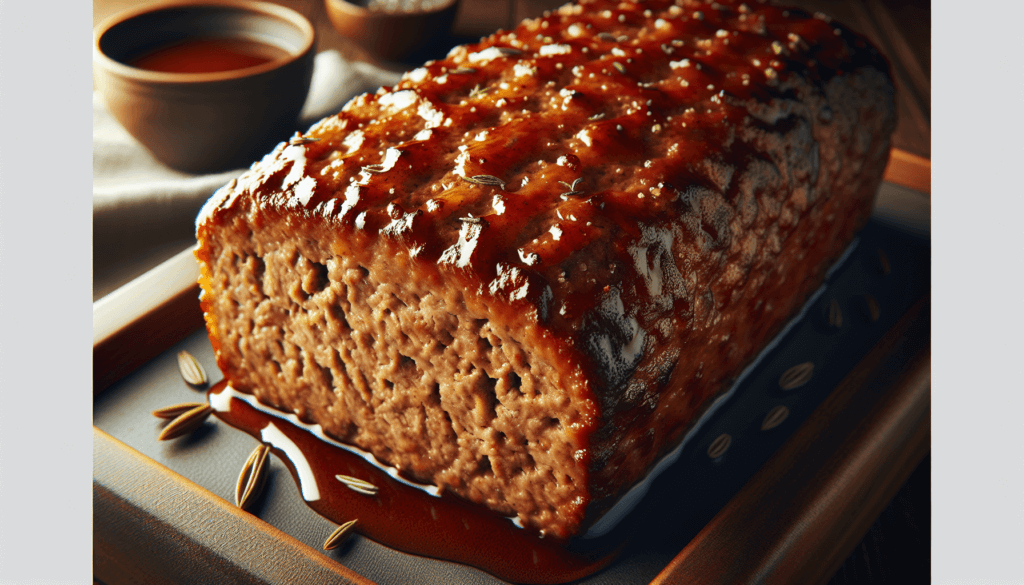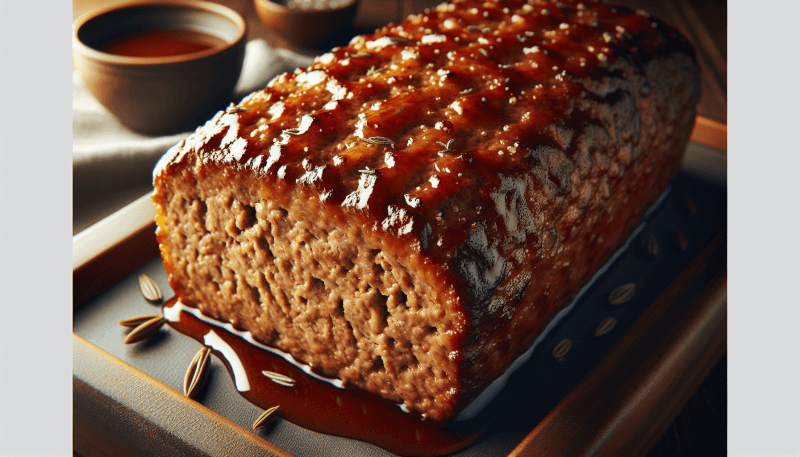If you’re looking to create the ultimate classic meatloaf, look no further! In this article, you’ll discover the best ways to make this iconic dish that will leave you and your family wanting more. From the perfect blend of meat and seasonings to the ideal cooking techniques, we’ve got you covered. Whether you’re a seasoned chef or a beginner in the kitchen, these tried-and-true methods will help you achieve meatloaf perfection every time. Get ready to impress your taste buds and elevate your comfort food game with these delicious recipes and tips!
Choosing the Meat
When it comes to making a delicious and flavorful meatloaf, the first step is choosing the right meat. Ground beef is the traditional choice for meatloaf, and it provides a rich and savory flavor that pairs well with the other ingredients. Look for ground beef that has a higher fat content, such as 80/20 or 85/15, as this will help keep the meatloaf moist and tender.
Selecting Ground Beef
When selecting ground beef for your meatloaf, it’s important to choose a quality cut of meat. Look for ground beef that is bright red in color and has a minimal amount of fat trimmings. Opt for freshly ground beef, as it will have a better flavor and texture compared to pre-packaged ground beef. If possible, consider purchasing ground beef from a local butcher shop for the freshest and highest quality meat.
Trying Different Meat Combinations
If you’re looking to add some variety to your meatloaf, consider trying different meat combinations. Ground pork, ground veal, or ground turkey can be used in combination with ground beef to create a unique flavor profile. Experiment with different ratios of meats to find the combination that suits your taste preferences. Adding a small amount of sausage or bacon to the mix can also add an extra layer of flavor to your meatloaf.
Binding Ingredients
Binding ingredients are essential for holding the meatloaf together and preventing it from falling apart. There are several options to choose from when it comes to binding ingredients, each offering its own advantages and flavor variations.
Using Breadcrumbs
Breadcrumbs are a classic choice for binding the ingredients in meatloaf. They help absorb moisture and create a cohesive texture. Use either store-bought breadcrumbs or make your own by processing stale bread in a food processor until fine. Add the breadcrumbs to the meat mixture and mix well to ensure even distribution.
Trying Crushed Crackers as an Alternative
If you want to add a unique twist to your meatloaf, consider replacing the breadcrumbs with crushed crackers. Choose a cracker with a mild flavor that won’t overpower the other ingredients. Saltine crackers or buttery crackers work well for this purpose. Crush the crackers in a plastic bag using a rolling pin or pulse them in a food processor until fine. Use the crushed crackers in the same way you would use breadcrumbs, and enjoy the added crunch and flavor they bring to your meatloaf.
Using Rolled Oats for a Healthier Option
For those looking for a healthier alternative to breadcrumbs or crackers, rolled oats can be used as a binding ingredient in meatloaf. Oats add a subtle nutty flavor and provide a good amount of fiber. To use rolled oats in your meatloaf, simply substitute them for the breadcrumbs or crushed crackers in the recipe. Keep in mind that using oats may result in a slightly denser texture, but the added health benefits are worth it.

Adding Moisture
To ensure that your meatloaf is moist and flavorful, it’s important to add ingredients that contribute moisture to the mixture. By incorporating these ingredients, you’ll end up with a juicy and delicious meatloaf every time.
Including Milk or Cream
One of the most common ways to add moisture to meatloaf is by including milk or cream in the recipe. The dairy helps to keep the meatloaf tender and moist during the cooking process. Simply add a small amount of milk or cream to the meat mixture, and mix until well combined. You can use any type of milk or cream, including whole milk, 2% milk, or even heavy cream, depending on your preference.
Using Eggs as a Binding Agent
Eggs not only act as a binding agent but also contribute to the moisture and richness of the meatloaf. They help hold the ingredients together and provide a light and fluffy texture. To incorporate eggs into your meatloaf, simply beat them in a separate bowl and then add them to the meat mixture. Use one or two eggs, depending on the size of the meatloaf and your personal preference.
Trying Tomato Sauce or Tomato Paste
Another way to add moisture and flavor to your meatloaf is by including tomato sauce or tomato paste in the recipe. The acidity of the tomatoes helps break down the proteins in the meat, resulting in a more tender and juicy loaf. You can either mix the tomato sauce or paste directly into the meat mixture or use it as a glaze on top of the meatloaf while it bakes. Experiment with different types of tomato sauce, such as marinara or barbecue sauce, to add a unique twist to your meatloaf.
Enhancing Flavor
While meatloaf is already delicious on its own, there are several ingredients you can add to enhance its flavor even further. By incorporating these flavorful ingredients, you’ll take your meatloaf to the next level.
Adding Worcestershire Sauce
Worcestershire sauce is a popular choice for adding a savory and tangy flavor to meatloaf. This versatile sauce contains a blend of spices and seasonings that complements the flavors of the meat. Add a tablespoon or two of Worcestershire sauce to the meat mixture, and mix well to ensure it is evenly distributed. The result will be a meatloaf with a rich and complex flavor that your taste buds will love.
Including Diced Onions
Onions are a staple ingredient in meatloaf and add a sweet and aromatic flavor. They also contribute moisture and help keep the meatloaf tender. Dice an onion finely and mix it into the meat mixture before forming the loaf shape. If you prefer a milder onion flavor, you can sauté the onions before adding them to the meatloaf. This will bring out their sweetness and add an extra layer of flavor to your dish.
Experimenting with Garlic Variations
Garlic is another ingredient that can take your meatloaf to the next level. It adds a robust and slightly spicy flavor that pairs well with the other ingredients. You can use minced garlic or garlic powder, depending on your preference. Start with a small amount, such as one or two cloves, and adjust according to your taste. If you enjoy a stronger garlic flavor, feel free to increase the amount. Mixing the garlic into the meat mixture will ensure the flavor is distributed evenly throughout the meatloaf.
Incorporating Fresh or Dried Herbs and Spices
Fresh or dried herbs and spices are a great way to add depth and complexity to your meatloaf. Consider using herbs like thyme, rosemary, or parsley to enhance the flavors. These herbs not only add a delightful aroma but also contribute their unique flavor profiles to the dish. You can use either fresh or dried herbs, depending on what you have available. Experiment with different combinations of herbs and spices to find the perfect blend for your taste buds.

Customization Options
One of the best things about making meatloaf is that it can be easily customized to suit your preferences. By adding different ingredients, you can create a unique and personalized meatloaf that is truly your own.
Incorporating Shredded Cheese
If you love cheese, why not incorporate it into your meatloaf? Adding shredded cheese to the meat mixture adds an extra layer of flavor and creates a melty, gooey texture throughout the loaf. Choose a cheese that melts well, such as cheddar, mozzarella, or Monterey Jack. Mix the cheese into the meat mixture, or for a more pronounced cheese flavor, create a cheese-stuffed meatloaf by layering the cheese in the middle of the loaf.
Trying Different Types of Mustard
Mustard is a versatile ingredient that can add a tangy and slightly spicy flavor to your meatloaf. Experiment with different types of mustard, such as Dijon, whole-grain, or spicy mustard, to add a unique twist to your meatloaf. You can either mix the mustard into the meat mixture or use it as a glaze on top of the meatloaf before baking. The choice is yours, and the possibilities are endless!
Adding Sautéed Vegetables for Extra Nutrients
Adding sautéed vegetables to your meatloaf not only adds flavor but also provides extra nutrients. Sautéed onions, bell peppers, mushrooms, or zucchini can all be delicious additions to your meatloaf. Simply chop the vegetables finely and sauté them in a bit of oil until tender. Let them cool before adding them to the meat mixture, and then mix well to ensure they are evenly distributed. The result will be a meatloaf packed with flavor and healthy goodness.
Toppings and Glazes
Toppings and glazes can take your meatloaf from ordinary to extraordinary. They add an extra layer of flavor and visual appeal to your dish. Here are some options to consider.
Exploring Tomato-Based Glazes
A classic choice for meatloaf toppings is a tomato-based glaze. It adds a tangy and slightly sweet flavor to the meatloaf and creates a beautiful shiny finish. There are many variations of tomato-based glazes, ranging from simple ketchup to more complex sauces. Experiment with different combinations of ingredients, such as ketchup, brown sugar, Worcestershire sauce, and vinegar, to create your own signature glaze.
Considering Barbecue Sauce Options
For those who love smoky and sweet flavors, barbecue sauce makes an excellent choice as a meatloaf topping. Brush the meatloaf with your favorite barbecue sauce before baking or use it as a glaze during the last few minutes of cooking. The heat from the oven caramelizes the sauce, resulting in a sticky and flavorful coating on the meatloaf. Choose a barbecue sauce that complements the flavors in the meatloaf, whether it’s a tangy Carolina-style sauce or a sweet and smoky Kansas City-style sauce.
Using Ketchup as a Simple Topping
Sometimes, simplicity is key. A dollop of ketchup on top of your meatloaf is a classic and easy way to add a touch of sweetness and tang. Simply spread a layer of ketchup over the meatloaf before baking, or save it for the final few minutes of cooking to prevent burning. This straightforward topping option lets the flavors of the meatloaf shine while adding a familiar and comforting taste.

Baking Techniques
To ensure that your meatloaf bakes evenly and retains its shape, it’s important to follow the proper baking techniques. By paying attention to dish size, loaf formation, and using foil as a cover, you’ll achieve perfect results every time.
Choosing the Right Dish Size
The size of the baking dish you choose can affect the cooking time and texture of your meatloaf. If the dish is too large, the meatloaf may spread out and become thin. Conversely, if the dish is too small, the meatloaf may not cook evenly. Choose a baking dish that allows the meatloaf to retain its shape but still leaves a bit of room for airflow around the edges. A 9×5-inch loaf pan is a good starting point, but don’t be afraid to adjust the size based on your specific recipe and preferences.
Forming the Loaf Shape
When shaping your meatloaf, take care to create a loaf that is evenly sized and compact. Start by placing the meat mixture on a baking sheet or in the prepared loaf pan. Use your hands to shape the mixture into a loaf shape, making sure it is evenly packed together and free of any air pockets. A well-formed loaf will cook more evenly and hold its shape during baking. If desired, you can also create a slight indentation down the center of the loaf to prevent it from doming during baking.
Covering with Foil for Moist Meatloaf
To ensure that your meatloaf stays moist during baking, consider covering it with foil for the first part of the cooking process. This will help trap the steam and prevent the surface from drying out. Simply place a sheet of aluminum foil over the meatloaf and crimp the edges to seal it tightly. After the initial cooking time, remove the foil to allow the outside of the meatloaf to brown and develop a tasty crust. This simple technique will result in a deliciously moist meatloaf that will have everyone coming back for seconds.
Cooking Time and Temperature
To ensure that your meatloaf is cooked to perfection, it’s important to pay attention to the cooking time and internal temperature. This will ensure that your meatloaf is both safe to eat and has the desired doneness.
Determining the Ideal Internal Temperature
The internal temperature of your meatloaf is a good indicator of its doneness. The USDA recommends cooking ground meat, including beef, veal, pork, and lamb, to an internal temperature of 160°F (71°C). This will ensure that any harmful bacteria present in the meat are killed. To check the temperature, insert a meat thermometer into the thickest part of the meatloaf, making sure it does not touch the pan. Once the meatloaf reaches the recommended temperature, it is safe to eat.
Using a Meat Thermometer for Accuracy
To ensure accuracy when checking the internal temperature of your meatloaf, it’s best to use a meat thermometer. Instant-read thermometers are readily available and provide quick and accurate readings. Insert the thermometer into the thickest part of the meatloaf, avoiding any bones or the pan. Take the temperature towards the end of the recommended cooking time to prevent overcooking. If you don’t have a meat thermometer, consider investing in one for perfectly cooked meatloaf and other dishes.

Resting and Serving
After your meatloaf is cooked to perfection, it’s important to let it rest before slicing and serving. Resting allows the juices to redistribute within the meat, resulting in a tender and flavorful loaf.
Allowing the Meatloaf to Rest
Once you remove the meatloaf from the oven, tent it loosely with foil and let it rest for 10 to 15 minutes. This rest period allows the meat to relax and retain its juices. If you slice the meatloaf immediately after removing it from the oven, the juices will run out, leaving you with a drier and less flavorful result. Patience is key here, as the waiting time will be well worth it when you bite into a perfectly moist and tender slice of meatloaf.
Slicing and Plating Techniques
When it comes time to slice and plate your meatloaf, take care to create even and attractive portions. Use a sharp knife to make clean slices, avoiding any jagged edges. You can slice the meatloaf into individual portions or cut it into thicker slices for a heartier serving. To plate the meatloaf, consider arranging the slices on a serving platter or serving them directly on plates. Garnish with fresh herbs or a drizzle of sauce to add a finishing touch.
Accompanying Side Dishes and Sauces
Meatloaf pairs well with a variety of side dishes and sauces, enhancing the overall meal experience. Consider serving your meatloaf with classic accompaniments such as mashed potatoes and steamed vegetables. Other options include macaroni and cheese, roasted potatoes, or a fresh green salad. To elevate the meal even further, serve your meatloaf with a flavorful sauce or gravy, such as mushroom gravy or red wine sauce. The choice of sides and sauces is yours, so don’t be afraid to get creative and experiment with different combinations.
Leftovers and Freezing
If you find yourself with leftovers or want to prepare meatloaf in advance, it’s important to know how to store and reheat it properly to maintain its quality and taste.
Storing Leftover Meatloaf
To store leftover meatloaf, allow it to cool completely before transferring it to an airtight container or wrapping it tightly in plastic wrap. Store in the refrigerator for up to 3 to 4 days. It’s best to slice the meatloaf before storing it, as this allows for easy reheating. Proper storage will help prevent spoilage and maintain the flavor and texture of the meatloaf.
Reheating Options
When it comes to reheating leftover meatloaf, there are several options to choose from. One of the easiest methods is to microwave individual slices for a quick and convenient meal. Simply place the sliced meatloaf on a microwave-safe plate and heat on high for 1 to 2 minutes, or until heated through. Alternatively, you can reheat the meatloaf slices in a preheated oven at 350°F (175°C) for approximately 10 to 15 minutes, or until warmed to your liking. Another option is to heat the meatloaf slices in a skillet over medium heat, flipping them occasionally until heated through.
Freezing to Preserve Freshness
If you want to make meatloaf in advance or have leftovers that you won’t be able to consume within a few days, freezing is a great option to preserve its freshness. Allow the meatloaf to cool completely, then wrap it tightly in plastic wrap and aluminum foil. Label the package with the date and store it in the freezer for up to 3 months. When you’re ready to enjoy the frozen meatloaf, thaw it overnight in the refrigerator and follow the reheating instructions mentioned above.
With these tips and techniques, you’ll be able to make a classic meatloaf that is bursting with flavor, moist, and perfectly cooked every time. Explore different combinations of ingredients, glazes, and toppings to discover your favorite variation. Whether enjoyed fresh out of the oven or as leftovers, a well-made meatloaf is sure to satisfy and bring comfort to your table. Happy cooking!



